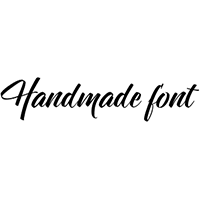New FontFonts: The Creation of FF Unit Slab

One of the things the FontFont foundry is known for are its successful serif/sans super families. Think for example Martin Majoor's FF Scala which played a major role in (American) graphic design in the '90s, Xavier Dupré's award-winning FF Absara, Fred Smeijer's seminal FF Quadraat, the revolutionary FF Beowolf and FF BeoSans, Nick Shinn's whimsical FF Fontesque, and so on. So it may seem peculiar that one of its founding fathers Erik Spiekermann – who together with graphic design legend Neville Brody started the independent type foundry almost twenty years ago – only recently started adding serif counterparts to his popular FontFont families. Although his early ITC Officina was released from the onset in a sans and a serif version, it took him three years and the help of two bright young designers to develop a worthy companion for FF Meta, the Helvetica of the 90s. And now, almost two years later, it's time for FF Unit Slab to complement FF Unit and FF Unit Rounded.
U P D A T E D– with new sample images, new version of PDF, and online viewing of specimen.

The FF Unit super family consists of FF Unit, FF Unit Slab, and FF Unit Rounded.
Just like FF Meta Serif, FF Unit Slab is another collaboration between Erik Spiekermann and Christian Schwartz with Kris Sowersby. Erik Spiekermann art directs the typefaces, with Christian and Kris designing and building the fonts, and other designers sometimes assisting them in the production. Compared to the FF Unit Slab project FF Meta Serif presented a lot more unanswered questions before they began, so Erik was pretty much hands-off with this one. Christian and Kris had more autonomy, sending back and forth PDFs featuring intermediary versions of the fonts, annotated with red marks. This way they each had a copy, and Erik could "listen in" on the process and weigh in when necessary. There actually weren't any pencil sketches done for this family. A detailed examination of their working method can be found in my Unzipped article on the creation of FF Meta Serif. It'd feel like cheating if I simply copy-pasted that section in this post, just to make it longer. ;)

Comparison of the influences of DBSans Condensed (top) on FF Unit (bottom), and finally on FF Unit Slab (centre).
Strange as it may sound, FF Unit – and subsequently FF Unit Slab – actually was a false start (one of two or three) before Erik Spiekermann and Christian Schwartz hit on the final design for the DB Type family, the corporate type system for Deutsche Bahn AG which won them a gold medal from the German Design Council in early 2007. When they were first working on FF Unit, it was intended to be a new corporate typeface for the Deutsche Bahn. They used the basic proportions of FF Meta as a starting point, but stiffened it up, and simplified it. Most importantly, small details were inserted that would aid legibility for train schedules – keeping the tail on the l from FF Meta, adding serifs on 'I' 'i' and 'j', and even some additional serifs that didn't make it to the final retail version of the font, such as a foot serif on 'r' to keep 'rn' from being mistaken for 'm'. These extra serifs did find their way into the final DB Sans (which had nothing to do with Unit in the end).

The serifs from the UC 'I' and lc 'i' in the original FF Unit were copied and carried out through the rest of the family.
Those extra serifs proved instrumental, as they ended up informing the look and the feel of the serifs in FF Unit Slab. Kris and Christian copied the slabs from the UC 'I' and lc 'i' in the original FF Unit and carried them out through the rest of the family. Furthermore they also played a role in the development of FF Meta Serif. As you can read in the aforementioned Unzipped article, Erik and Christian used FF Unit Slab to define how slabby and straight FF Meta Serif should get.

Deciding whether or not to have inside bottom serifs on the 'h', 'm', and 'n' in FF Unit Slab.
Yet designing a slab serif variant is more than simply sticking fat serifs on a sans serif. While the horizontal serifs quickly and relatively painlessly transformed the face from sans to slab, Kris and Christian tried to keep the vertical serifs pretty minimal, in keeping with the clean, open look of the sans. Those were added only wherever absolutely necessary – 'c', 's', '7' – but left alone when possible, for example on 'a', 'r', '2', '3', and '5'. Erik, Christian and Kris agreed that on those characters the serifs added too much visual noise and could be left off without giving the impression the designers were trying to make a statement.

Comparing the italics of FF Unit (bottom) with FF Unit Slab (top).
The italics were a bit more tricky, and it took a few rounds of sketches to agree on which serifs to trim off, if any, and whether Kris' idea for softer tails (influenced by the original 'l') would suit the family. In the end, the designers decided these made perfect sense, considering the slight nods to cursive forms in the original italics (i.e. the slight curve on incoming strokes, and the single-story 'a'). They kept the colour consistent while subtly changing the texture of the italic, which is helpful when using it to show emphasis in text.

Alternates in FF Unit.
The end result is no-nonsense slab serif version off FF Unit with an emphasis on the horizontal serifs and a slightly increased contrast. Christian Schwartz explains the thinking behind the family:
While FF Unit is FF Meta's "grown up sister", FF Unit Slab and FF Meta Serif are more like second cousins. While Meta's seriffed companion plays up all of the organic quirks found in the original sans, Unit Slab's serifs are decidedly no-nonsense and un-selfconscious. The sturdy and plain forms of the original lent themselves to a very straightforward serif treatment, inspired in part by mid-20th century typewriters, particularly where serifs have been left off of the left sides of stems to keep the counterforms open. A slightly customised version made its debut in the corporate identity of edenspiekermann_, Erik Spiekermann's new Berlin-and Amsterdam-based design consultancy.
The "people" page on edenspiekermann_
The manifesto on edenspiekermann_
And how does FF Unit Slab relate to its extended family?
When Erik and I first started work on Meta Serif, we were also planning to do Unit Slab, either at the same time or right after Meta Serif was released. We figured that since Meta and Unit have so much in common, it would be smart to make two serif families that could be used together, along with either of the sans serifs. Meta, which has more organic details, was going to be the more traditional serif text face. Unit seemed like it would adapt well to being a clean and contemporary slab serif, especially since the 'i' and 'I' in the sans already showed us what the serifs would look like. We actually roughed out complete ranges of test words for both families at the same time, with Kris, and Unit Slab sat half-finished while Meta Serif was completed. In the end, I think we accomplished what we set out to do – Unit Slab works well as headlines or emphasis for text in Meta Serif, Meta, or Unit; Unit can be used. Meta headlines and emphasis in Unit Slab text don't look amazing, but they do work. The only combo that doesn't work at all is Meta Serif emphasis in Unit or Unit Slab text, but I think most people would know better.
Download the extensive FF Unit Slab Pro PDF here (3.7 MB) or preview it online below.


































 闽公网安备35010202000240号
闽公网安备35010202000240号